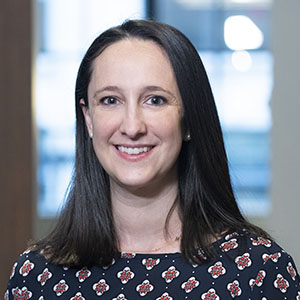As we move through the third year of the COVID-19 pandemic and increasingly come face to face with the health impacts of climate change, the need for more capital directed at improving health and well-being is apparent. Some of this capital will come from government and multilateral organizations, some from philanthropy—but this is not enough.
We believe that impact investors also have a big role to play. Healthcare is the second-largest sector of potential impact investments The Bridgespan Group has analyzed over the past several years, indicating the growing opportunity for investing in the sector.1 We would like to highlight three areas where the potential exists for impact-oriented investors to make a real difference. There are opportunities for both impact-first investors (who will accept below-market returns if there is strong impact potential) and those who are looking for both impact and market-rate returns.
Expanding Access to Care Globally
As if we needed reminding, COVID-19 has highlighted the global interconnectedness of health challenges and solutions. Nine months after researchers released the SARS-CoV-2 genetic sequence, there were 321 COVID-19 vaccine projects underway across six continents, with 33 in clinical trials enrolling participants in 34 countries. A little over a year later, researchers and doctors based in Botswana and South Africa made key contributions on sequencing and understanding the spread of the Omicron variant, which helped vaccine makers around the world develop new formulations.
Of course, long before the pandemic, impact investors have put capital to work on vaccines. The International Finance Facility for Immunisation, for example, has used vaccine bonds to support the work of GAVI, the Vaccine Alliance, since 2006 to provide investors with an attractive rate of return. The invested funds make long-term government donor pledges available immediately, thereby accelerating the delivery of vaccines.
When COVID-19 began to spread globally, GAVI got to work again with impact investors. It quickly raised $5.4 billion in loans and guarantees—far more than the $1.5 billion it raised in grants—for its Global Goal: Unite for Our Future initiative. With no vaccines available in those early months, the funding was used to provide equitable access to COVID-19 tests and treatments, as well as education and other public health supports, for low-income countries and most marginalized communities. Later, the initiative turned its focus to vaccine equity for countries that would otherwise have been the least able to pay for vaccines.
Aside from the acute crisis represented by the pandemic response, impact investors also provide capital for other vital but often neglected and underfunded components of the healthcare system, such as eye care or dental care. This has the potential to measurably improve the lives of enormous numbers of people. For example, in 2021, ABC Impact, the Singapore-based private equity fund focused on impact investing across Asia, invested $24 million in Kim Dental, one of Vietnam’s leading dental system operators. The funding was designed to help Kim Dental expand its high-quality dental health services across Vietnam. In making this investment, David Heng, founder and CEO of ABC Impact, noted in a press release announcing the investment that “oral health, despite being an important component of primary healthcare, is often neglected and continues to pose a major public health concern in many developing countries.”
Investments in expanding access via telehealth also have the potential for high impact. Similar to the way the widespread use of cellphones has provided opportunities to dramatically expand access to financial services for many millions of people, the same technology can dramatically expand access to healthcare. For example, in 2021, investors put $66 million into Doctor Anywhere, a Singapore-headquartered digital health platform with a network of nearly 2,800 doctors and medical professionals serving more than 1.5 million people across Southeast Asia. The company describes itself as “omnichannel,” because it also runs in-person clinics, provides home visits, delivers medication, and operates a marketplace for health and wellness products. Doctor Anywhere’s mission, as founder and CEO Lim Wai Mun has told the press, is to become “the largest tech-enabled omnichannel healthcare provider in Southeast Asia.”
Strengthening Mental Health and Wellness Supports
COVID-19 and its consequences—closed schools, widespread mortality, social isolation, disrupted work and personal lives—have only exacerbated the need for expanded access to high-quality mental health care. The prevalence of anxiety and depression went up 25% globally in the first year of the pandemic, according to the World Health Organization (WHO). The American Psychological Association (APA) notes that even before the pandemic, less than half of U.S. adults and children with mental health conditions were receiving treatment because of stigma, cost, lack of providers, or long waiting times. COVID-19 has brought more people to telehealth and other tech options for treatment. And these forces have met head-on with the ongoing shortage of mental health providers, creating what the APA calls a “perfect storm of funding opportunity.”
One example is What If Ventures, whose investments are based on the idea that “the need for mental health care is far greater than the supply of affordable, effective solutions.” Since its founding in 2020, What If has invested $62 million in 47 companies focused on improving mental well-being. However, as founder and managing partner Stephen Hays wrote earlier this year, “there are a lot of solutions in the market that simply shuffle existing care capacity from one platform to another.” So the company is looking at different ways to increase the supply of care, from new drugs and behavior change apps that create longer-term engagement to new mental-health-support approaches for children and adolescents.
Approaching gaps in mental health care with equity front and center can help an investor maximize impact. The WHO highlighted that the pandemic had a disproportionate impact on the mental health of young people and women. In the United States, rates of some mental health disorders are higher among people of color, who also face barriers that result in lower rates of treatment. Recently, an array of startups has been founded by people of color to address the issue. One of the best known is Shine—whose cofounders are Black and Asian American—which provides mental health support to diverse users, including those who’ve experienced discrimination because of their race, ethnicity, gender identity, sexual orientation, body size, religion, or other markers of identity. In a little over three years, the Shine app has engaged four million users across the world.
Supporting an Aging Population
According to the World Bank’s population projections, the number of people age 65 and over will increase by over one-third from 2020 to 2030 to reach 989 million people around the world. In the United States in 2030, 70 million people over 65 years old will represent 20% of the nation’s population.
One example of how impact investors are funding programs for this expanding population is InnovAge, whose US-based Program of All-inclusive Care for the Elderly (PACE) is an alternative to nursing facilities. Unlike many services for the elderly, which focus on more-affluent seniors, most PACE participants are eligible for both Medicare (age-qualified) and Medicaid (income-qualified) and can access the service at low or no cost. Through PACE, seniors receive customized healthcare and social support at a nearby center. Each PACE participant has a team of medical experts dedicated to providing personalized healthcare and support to help them age at home.
There are also social impact and economic opportunities in preventive care that help keep seniors healthy and at home—especially those involving technology. A 2020 report by UK Research and Innovation, which conducted focus groups on investment opportunities in healthy aging, found that “investment in preventative health was a major theme … and included areas like remote monitoring, digital connectivity, and data infrastructure.”
And seniors are hardly the technophobes they’re often made out to be. A study by AARP found that, for many devices, adoption among US adults age 50 and older is comparable to younger generations—especially smartphones, wearables, home assistants/smart speakers, and smart home technology. Still, the 2020 study shows huge gaps: while 40 percent of older people express interest in devices that remind them when to take their medicine or that communicate health information to a provider, only 2 percent of older people report currently using such devices.
Expanding access to care globally, strengthening mental wellness, and supporting an aging population are just three of the ways impact investors can help improve health and well-being. There are enormous potential markets in each of these areas, and opportunities for impact exist across the returns continuum. For investors with a strong interest in addressing health inequities, the most attractive opportunities will be those that have broad-scale benefits and are accessible to those with less ability to pay, or are solutions specifically targeted at the historically marginalized communities most burdened by health inequities.




